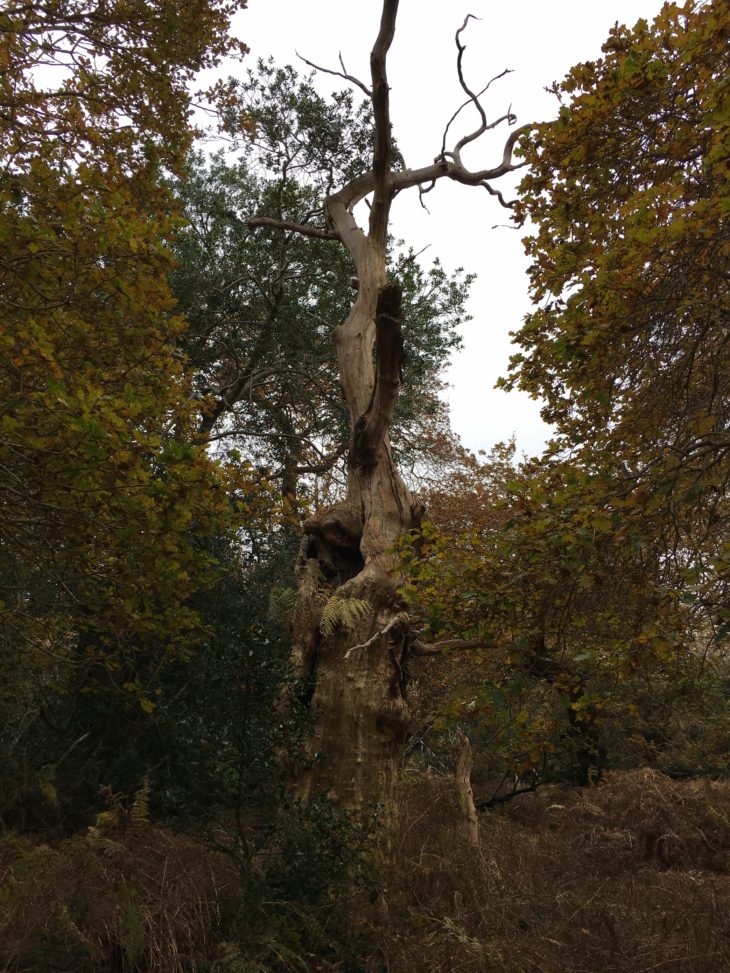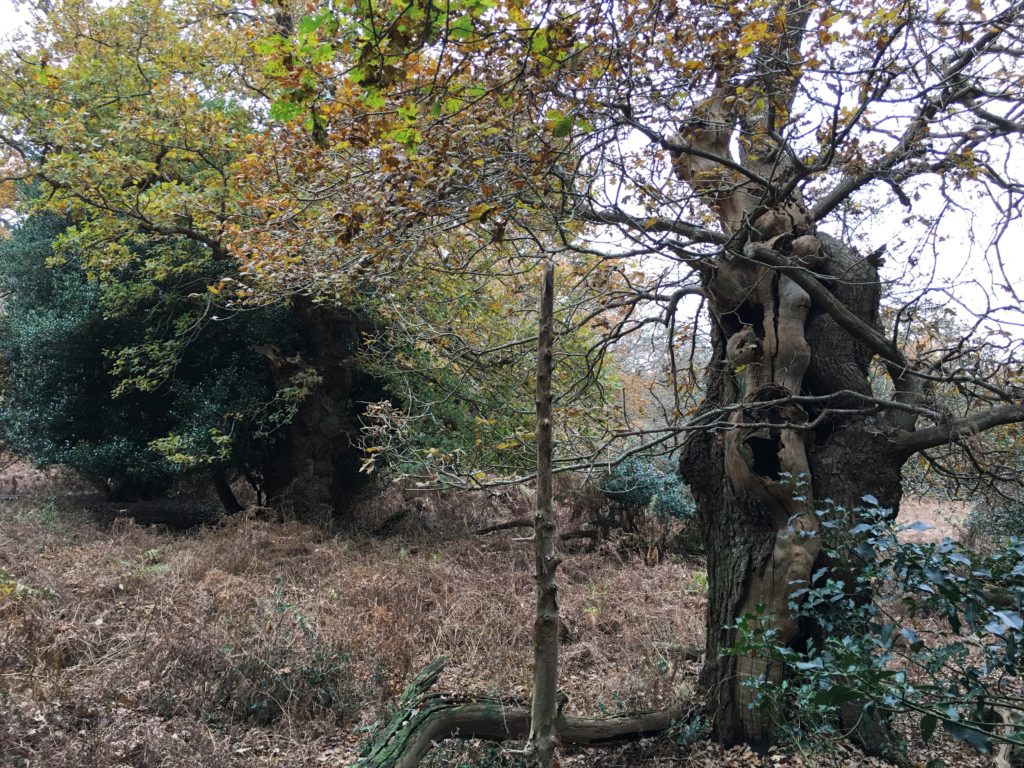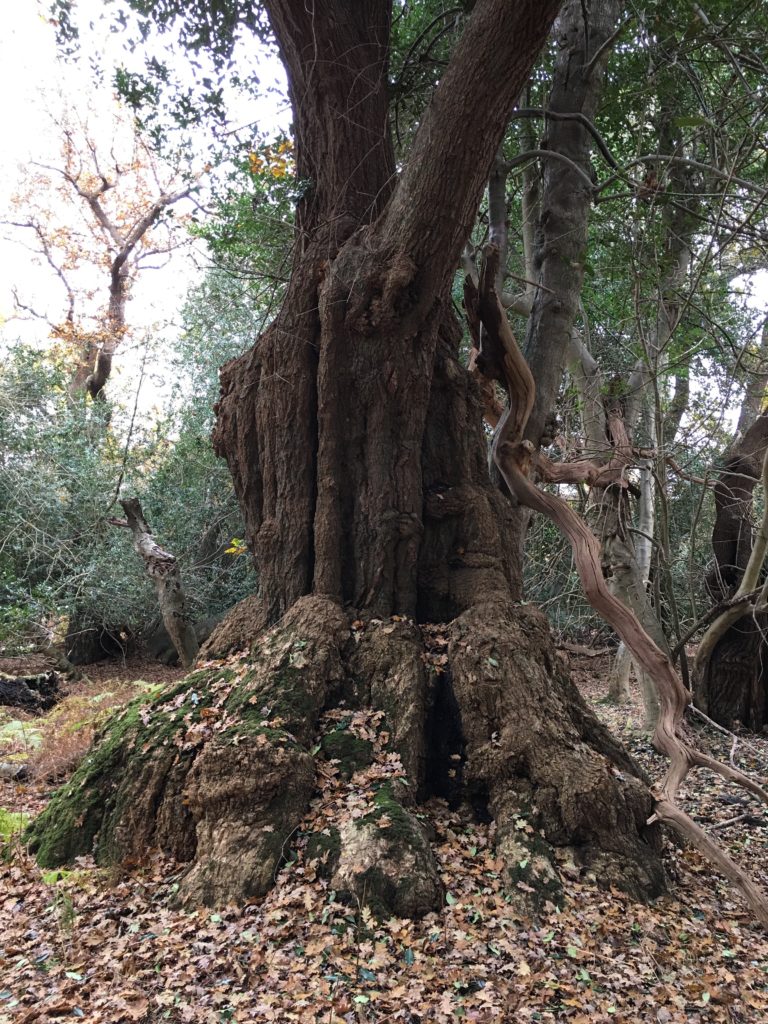A Walk in Staverton Thicks, Suffolk’s Best Kept Secret

There are few places in the world as magical as Staverton Thicks. There are probably even fewer that you can walk around for hours, for free, without encountering another soul.
Off the B1084, along the broad straight road that runs through Rendlesham forest, is a little patch of woods quite unlike any other. Blink and you’d miss it, but if you keep your eyes peeled then you’ll catch a glimpse of a lost world. In view for hardly a moment, the endless, stolid rows of softwood give way to a small enclave of broad-leaf trees – the Staverton Thicks. Caught somewhere between the most lurid fantasy of a Game of Thrones location scout and that day when Mother Nature bowed to peer pressure, they are undoubtedly one of England’s most unusual woods.
Staverton was once pollarded. Widespread throughout medieval and Early Modern Europe, coppicing and pollarding are means of woodland management wherein trees are cut back to the stump. Fresh shoots regenerate from this “stool”, quickly generating a ready supply of small, straight branches. Before the advent of plastics, when virtually everything was made of wood, coppiced wood had endless uses, from cutlery to tools. Staverton was only one part of a nationwide industry.
But then the world transformed.

The End of the Copse
Industrialisation completely changed the face of Britain. Communities, which had been virtually unchanged for generations, disappeared or else ballooned overnight. Industries that relied on the copses, like charcoal burners and thatchers, contracted as their markets shrunk. More people moved to towns and cities, removing the ready source of labour needed for intensively managed forestry like coppice.
The speed of change was so rapid that some areas virtually depopulated over night. The ancient woodlands, which had supported generations of Britons, lay fallow. Undisturbed for the first time in millennia, forests which had long echoed with the constant sound of axe, saw and pruning-hook fell silent.
Nature abhors a vacuum. The freshly abandoned copses had two unusual features which presented a rare opportunity to their woody denizens. Firstly, the trees were mature, with extensive, healthy root systems, though cutting had stunted their growth . Secondly, the low level foliage and hitherto careful management meant an abundance of light, with each tree standing in its own plot. To fill the vacuum left by people a period of wild, untrammeled growth began. Left to their own devices, the vigorous young shoots shot out in all directions, voraciously claiming the opportunity to grow which had always been denied them.

A New Start
Ever given a small child the opportunity to dress itself? Quite often the result is… interesting. The copses, freed from the strictures of seasonal cutting, underwent the equivalent of a toddler’s first chance at sartorial self-determination. The results were similarly unpredictable. Walk amongst the giant, bizarre trees of Staverton and you can see the effects that the newfound freedom had on the shapes of the trees. Massive stool buttresses, their roots jumbled and inextricable, support huge twisting branches, bursting outwards like a fountainhead. The branches interweave. They grow long and straight before suddenly bifurcating or else heavy, club-like protuberances suddenly develop in spindly branches, sending them drooping to the ground.
There are oaks in the Thicks that have grown into a living lattice of wood, a Cadbury’s Curly Wurly of branch and bough. There are some that squat, heavy and stout, covered in leafy protuberances like the goiters of some vast, warty toad. Some are completely bare expect for a scant toupée of leaves at the canopy, whilst others en-robe themselves in a cascade of falling branches, looking for all the world like a weeping willow masquerading as oak. Dotted between the venerable old pollards are hollies, not bushes mind, but trees – the shelter of the great oaks and the availability of the sunlight has given them opportunity to explore their potential and grow to vast heights, unseen in the rest of the UK.
Getting to Staverton
You can access Staverton Thicks either off the main road (not for the faint of heart!) or as part of the main Rendlesham Forest and Staverton Woodland Walk. However you enter the Thicks, please be sure to follow the footpath and treat this incredible area with the respect it deserves.
If you want to own part of the magic of Staverton, look no further than the incredibly characterful oaks boards in our slab gallery. Phenomenally wide boards for table tops, pippy planks for paneling and even huge burl slices for that statement dining table, you’re certain to discover something extraordinary.
Blog | 5 years AGO